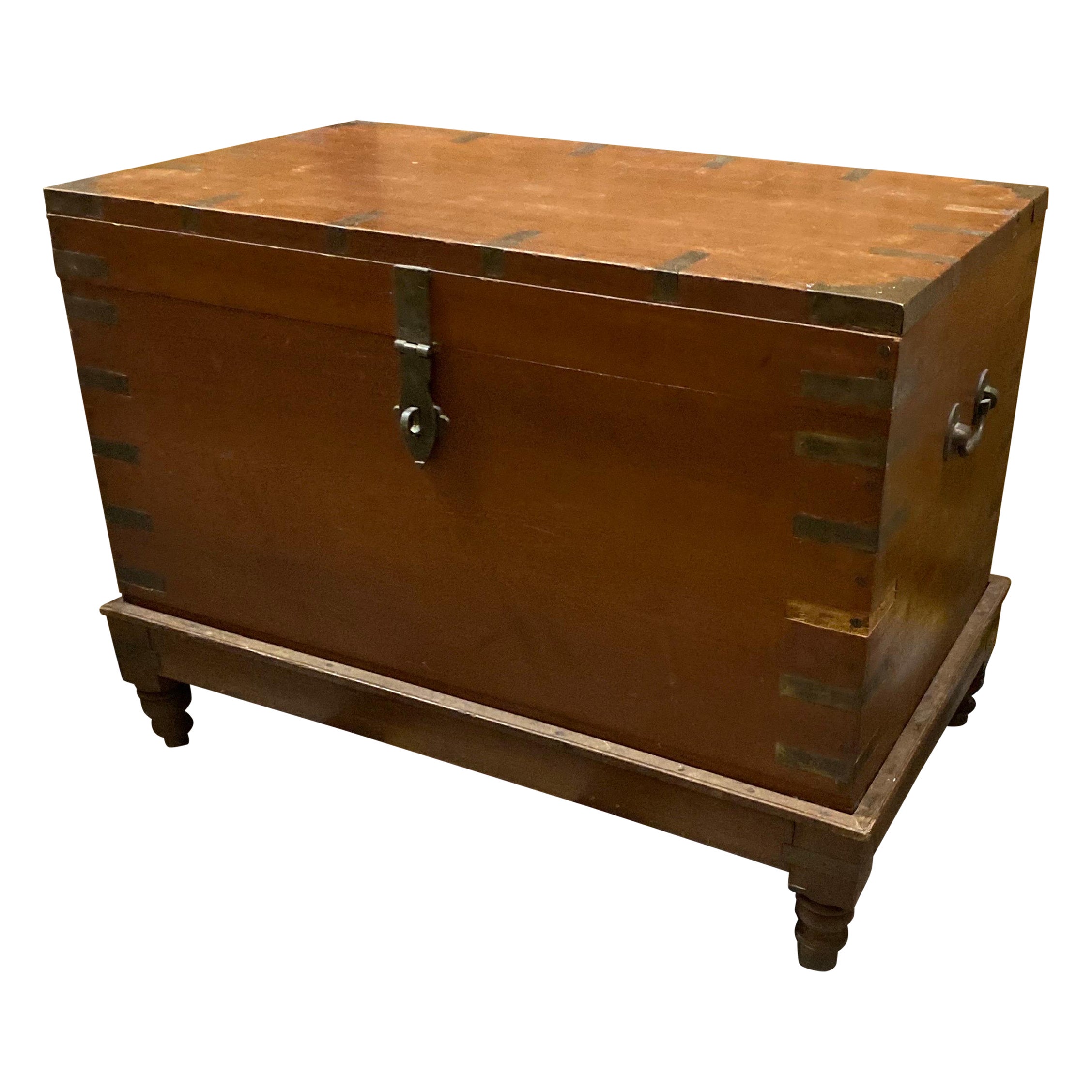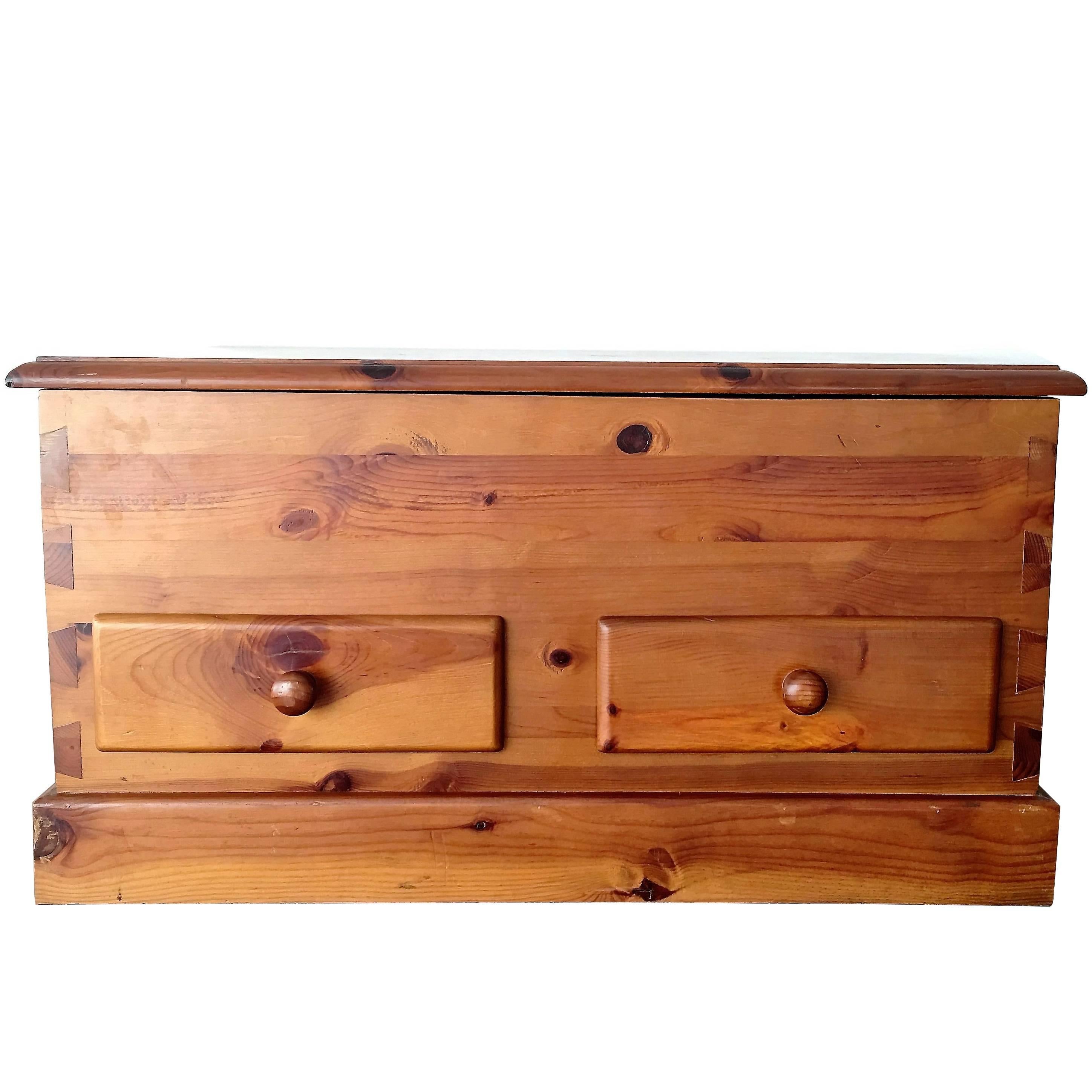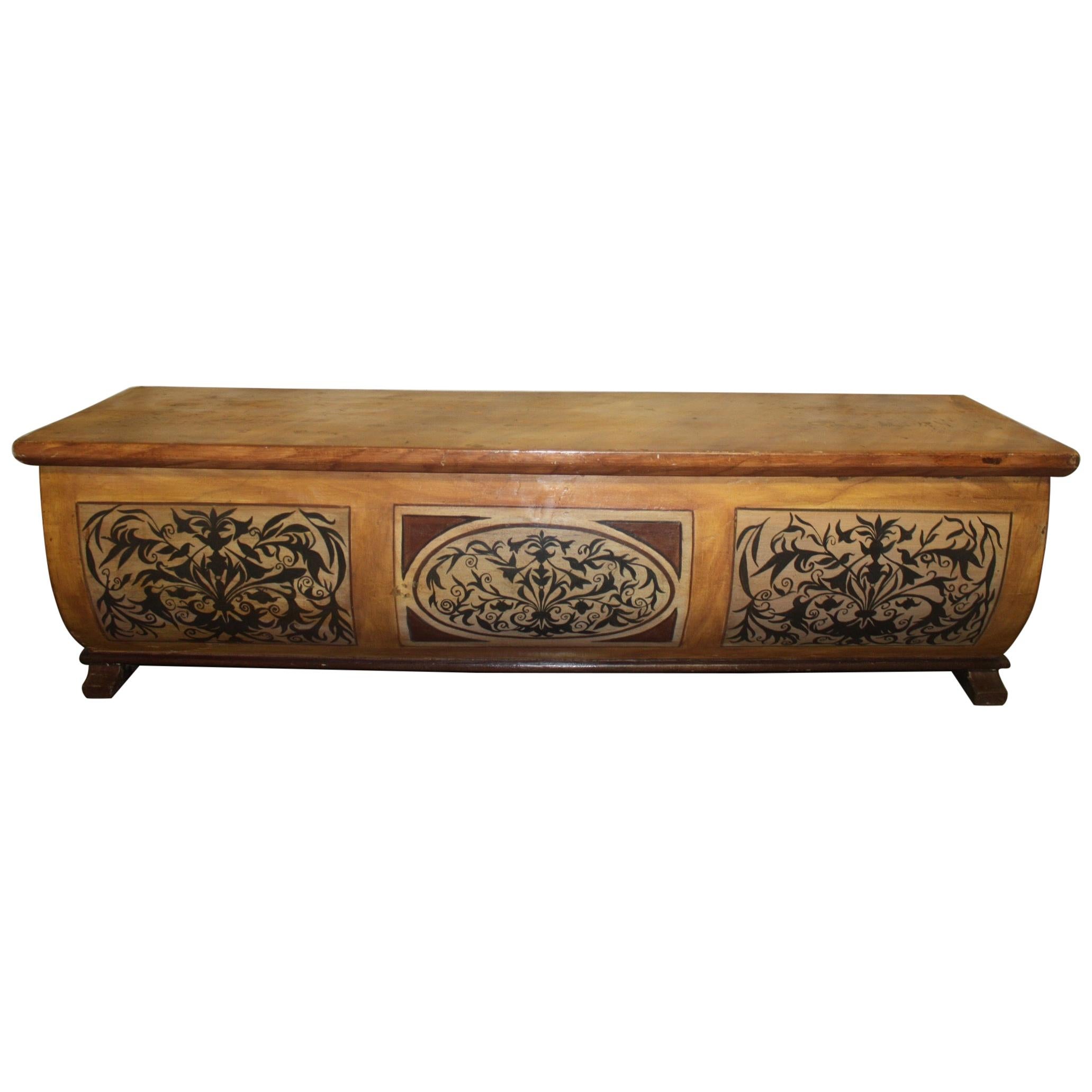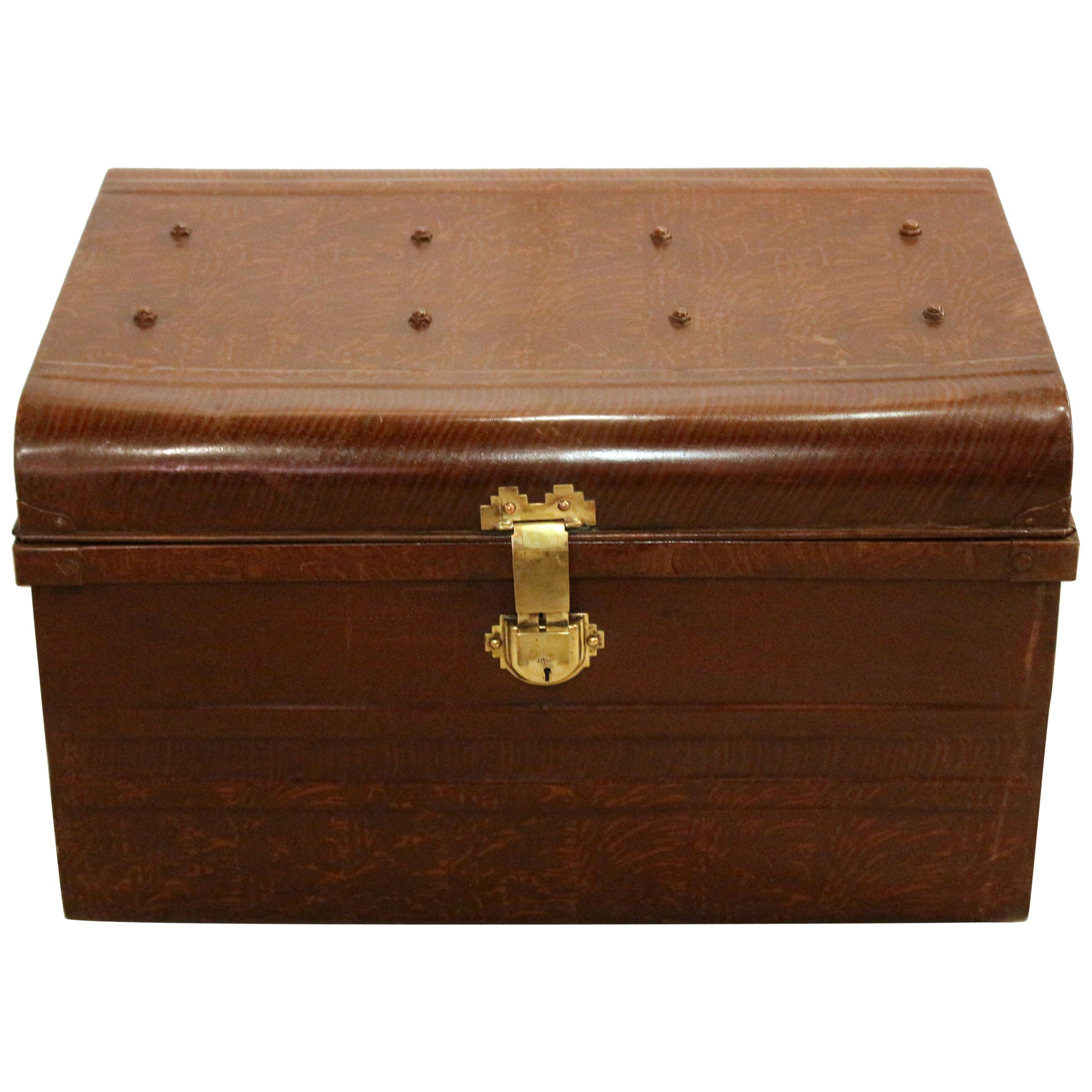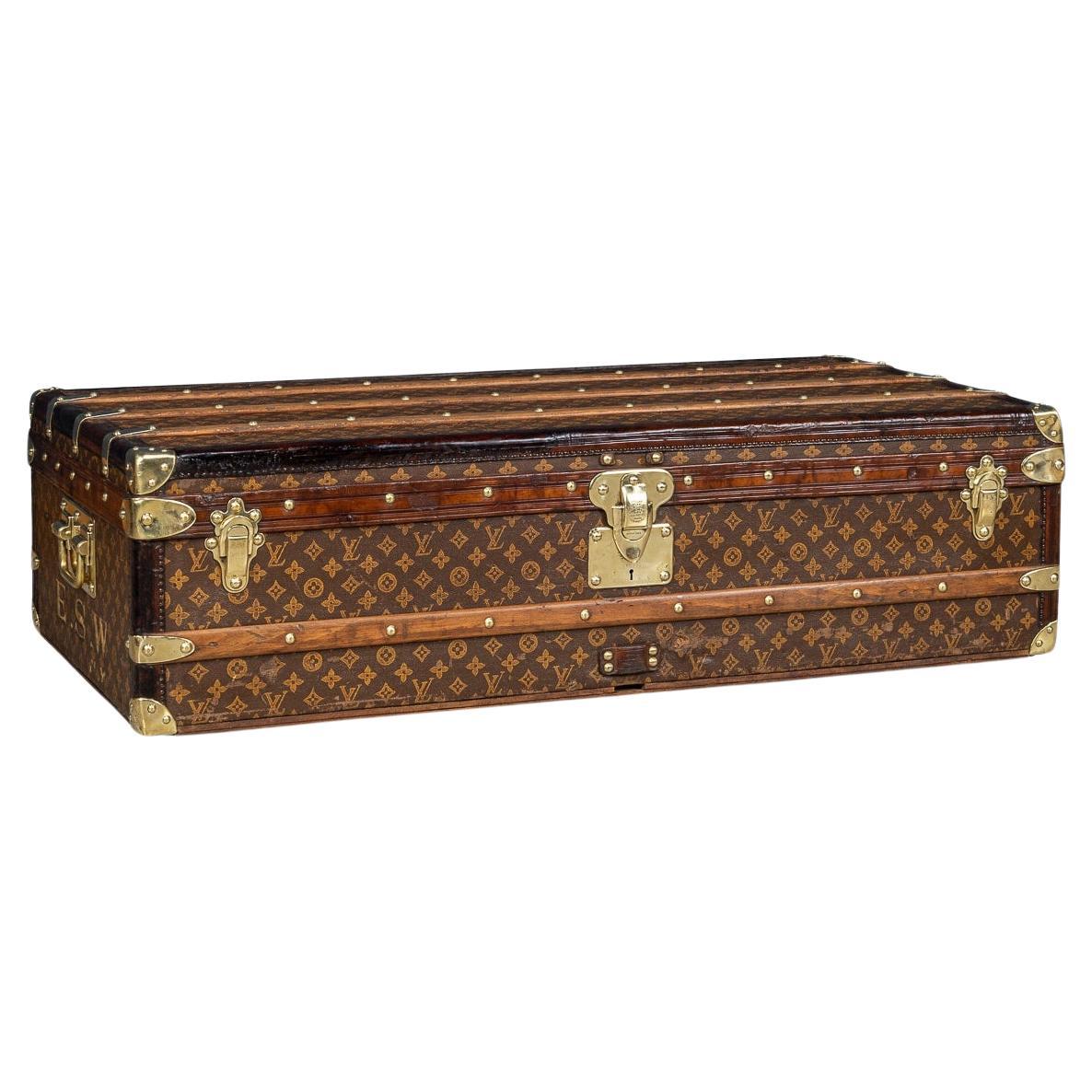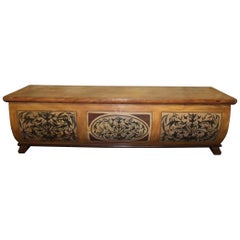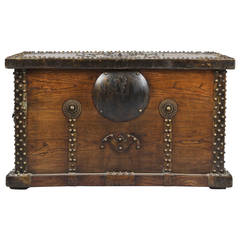
Wooden Trunk, India 20th Century
View Similar Items
1 of 6
Wooden Trunk, India 20th Century
About the Item
- Dimensions:Height: 25.2 in (64 cm)Width: 42.72 in (108.5 cm)Depth: 24.02 in (61 cm)
- Place of Origin:
- Period:
- Date of Manufacture:20th Century
- Condition:
- Seller Location:Paris, FR
- Reference Number:Seller: 20150101121stDibs: LU93562228112
You May Also Like
- 20th Century Large French Simple Wooden Trunk/ Blanket ChestLocated in Southampton, NY20th Century Large French Simple wooden trunk/ blanket chest A simple wooden rectangular box construction with brass strap hardware on edges on a turned leg wooden stand. A candle b...Category
20th Century French Blanket Chests
MaterialsBrass
- 20th Century Trunk for StorageLocated in Miami, FL20th century chest on bracket feet with a top that opens to reveal storage and drawers below.Category
Vintage 1940s Spanish Modern Wardrobes and Armoires
MaterialsPine
- Early 20th Century French Bench TrunkLocated in Stockbridge, GAEarly 20th century French bench trunk.Category
Early 20th Century French Renaissance Benches
MaterialsWood
- 20th Century French Wooden ShelvesLocated in High Point, NCA wooden shelving unit made in 20th century, France. This shelving unit is composed with a vintage fruit picking ladder teepeed together w...Category
20th Century French Rustic Shelves
MaterialsMetal
- Late 19th-Early 20th Century Steel TrunkLocated in Chapel Hill, NCLate 19th to early 20th century steel trunk with original faux bois paint, English. Brass latch lock with shaped backplates. Swing handles. Red painted interior. Ideal as a coffee ta...Category
Antique Late 19th Century Other Trunks and Luggage
MaterialsSteel
- 20th Century Louis Vuitton Trunk, France c.1930By Louis VuittonLocated in Royal Tunbridge Wells, KentAn exquisite and complete Louis Vuitton trunk from the early part of the 20th century. An absolutely essential item for elite travellers of its time the trunk is adorned in the iconic LV monogrammed canvas, accented by lozine trim and brass fittings. This trunk stood as the epitome of luxury over 100 years ago, boasting an unparalleled level of sophistication and elegance, it remains a timeless masterpiece that transcends eras. The captivating allure of the Louis Vuitton trunk transforms it into more than a mere luggage accessory; it becomes a focal point for any room. With its impressive dimensions, it is perfectly suited as a striking coffee table, side table, or even as a standalone centrepiece, seamlessly integrating into any interior, whether modern or traditional. An extraordinary piece that not only pays homage to the past but also serves as a statement of unparalleled luxury in the present. A brief history about Louis Vuitton trunks: Louis Vuitton was born in 1821 to a farmer and milliner and came from a long-established working-class family in eastern France. Vuitton grew up understanding the effects of perseverance and a strong work ethic from watching his family. At the age of 16, he made the decision to walk 292 miles from his hometown to Paris to try and make a new life for himself. When he arrived the city was in the midst of industrialization with current modes of transportation evolving quickly allowing for longer journeys. With this came the need for sturdy travel pieces. Vuitton was taken as an apprentice for a successful box maker and packer named Monsieur Marechal. He learned to craft durable containers and how to pack them properly – a well-respected profession at the time.In 1854, years after he had mastered his craft and became well respected for it, Vuitton ventured out on his own to open a shop on Rue Neuve des Capucines. It was here that he began to establish himself as a luggage maker. Then, in 1858, Vuitton designed the first Louis Vuitton steamer trunk. At the time trunks had rounded tops to allow for water to run off but this did not allow for convenient stowage. Vuitton introduced a flat, yet waterproof, trunk that was easily stackable. The first of his trunks were outfitted with a grey canvas referred to as Trianon – it wouldn’t be until several decades later that the signature monogram would be introduced. With a burgeoning business, Vuitton moved his family and workplace to Asniere, where he employed twenty workers to craft his trunks. By 1900 he would have 100 employees, and in 1914 the company would more than double in size. After years of success, Vuitton began to experiment with the design of his luggage by introducing a new striped canvas pattern (1876) and later the still well-known Damier print (1888). The hand-painted patterns were developed to prevent counterfeits. Even in the late 1800s, Louis Vuitton was enough of a status symbol to warrant counterfeiting. In 1886, his son George invented and patented an ingenious locking system that made it impossible to pick the lock of their trunks. This lock is still used today. 1892 would prove to be a time of mourning for the family as Louis Vuitton passed...Category
20th Century French Other Trunks and Luggage
MaterialsBrass
